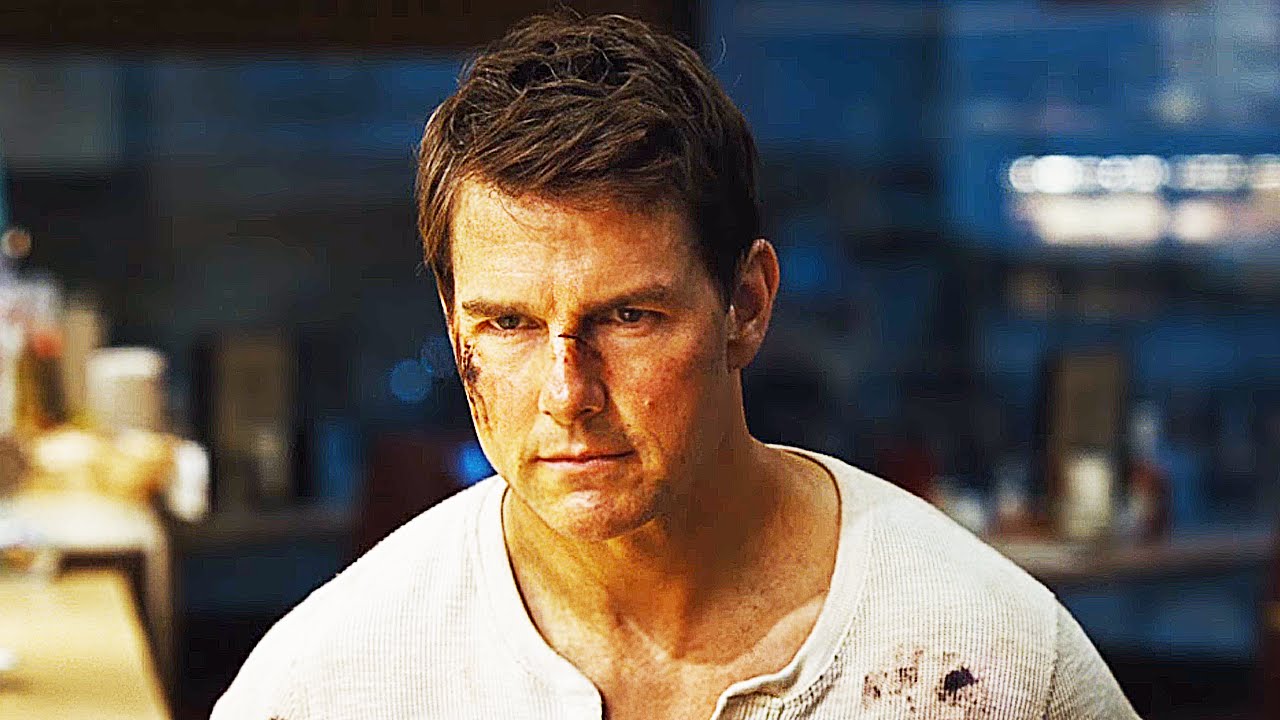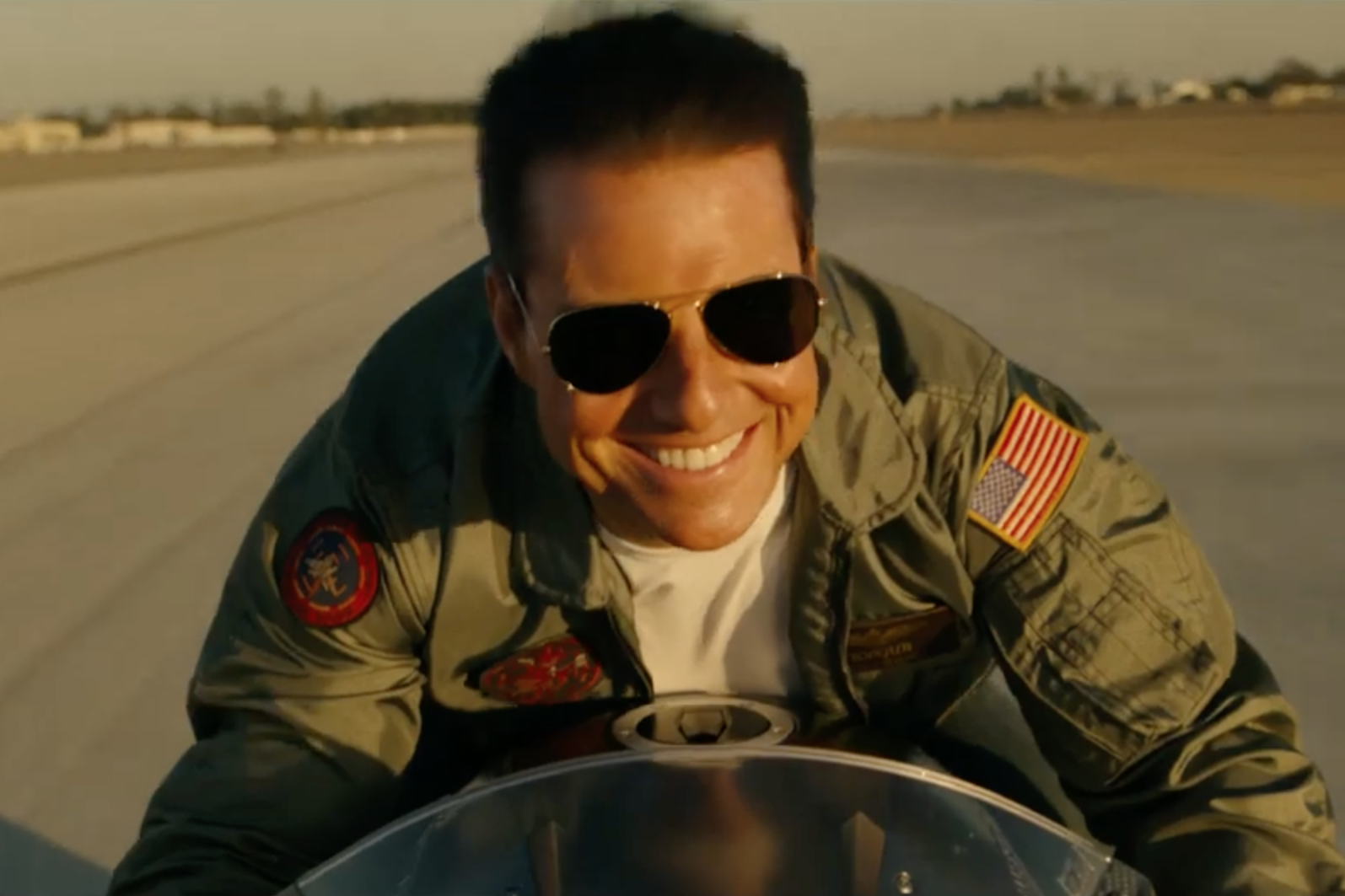Throughout the last decade, Tom Cruise’s action epics have continued to earn their keep, even as he enters a craggier and more robotic middle age. Last year’s star-studded Mission: Impossible — Rogue Nation was the second highest-grossing in the MI series, and even critically well-received. 2014’s The Edge of Tomorrow (Live. Die. Repeat., if you prefer)—a sci-fi Groundhog’s Day reboot—was the underdog action masterpiece of that year. And then there was the original 2012 Jack Reacher, which was simply very fun, featuring—among other things—Werner Herzog as a nameless one-eyed villain who seemed to be improvising all of his cryptic, nihilistic murmurings.
Cruise, apparently, liked playing author Lee Child’s haggard military-operative-in-exile enough to push for a sequel. (There is a whole series of curtly-titled Reacher novels to borrow from, including 61 Hours, Tripwire, and of course, Die Trying). As an analysis in The Hollywood Reporter explained, however, the 2012 film wasn’t enough of a success in America to be a shoe-in for a franchise. But Cruise put tens of his own millions in, and with the help of some Chinese investors, a second Reacher film—Jack Reacher: Never Go Back—was born. But following its opening weekend, it’s clear that the movie was at least a modest miscalculation: The box office returns were meager, just slightly surpassing the original’s initial take, and the reviews have been nothing but punishing.
Those who are inclined to give a new Tom Cruise film plenty of rope to be silly might shrug off these initial indications; I did so myself. But rest assured, Never Go Back is everything the detractors warned of and much more. It not only posits that we are in the true-blue waning moments of Tom Cruise movies being fun, but also, that the same might be true in general for Hollywood action-hero films. It mimics the beats of every action movie you have ever seen, but the surface detailing and emphases—the dialogue and antipathetic excuses for character-building—are downright alien.
The film takes place four years after the original, with Reacher hitchhiking back to his old D.C. stomping grounds after thwarting corrupt border police in Texas, to meet the major of his former unit while he was still in the military, Susan Turner (Cobie Smulders). Turner is brusquely established as his romantic interest—or object of obsession—before the opening credits, by virtue of a series of phone calls. Naturally, Reacher quickly finds a way to become her knight in shining armor: He arrives at army headquarters to find her in the clink, charged with espionage. Fast-forward to the end of the movie: It’s all the result, as you might imagine, of a conspiracy to cover up drug trafficking by a corrupt, covert arm of the military.
Largely unrelated to the central espionage plot is a storyline involving Reacher’s possible paternity of a wayward sixteen-year-old, which relates to a frame job for homicide someone has done on him. After busting Turner out of jail and taking his might-be daughter on the road with him, the film quickly sets up a makeshift family for Reacher. It’s milked for some Family Circus-caliber domestic humor as they juggle hotel rooms and eat takeout together. But more importantly, it gives Reacher a reason to kick ass harder than ever before. He doesn’t, though; there is far less and much worse action than in the first Reacher, and the relationships are so slotted in that they feel like a visual instruction manual for How Families Should Be. And so Reacher 2 is weirdly positioned as a morality tale, postulating that establishing a nuclear family is the ultimate goal of human toil and struggle, and that the saddest thing in the world is the hero who pulls back from the promise of that stability.
Reacher’s relationship to women recalls the recent affected outrage over Donald Trump’s hot-mic “locker room banter” by prominent Republican congressmen. These men expressed their inability to support his candidacy—or just offer their nebulous blessing—because they have wives and daughters who would be offended by Trump’s discussion. Similarly, women are special in Never Go Back because they are wives and daughters: Turner is an object of romance and devotion that anchors Reacher, and he loves Samantha partially because he sees himself in her. The only thing missing from the father-daughter bonding scenes in Never Go Back is Reacher smirking to the camera and jerking his thumb towards her: “I made this, folks.” These two women—one wife, one daughter—are the only featured female characters in the film (A young precocious cadet Reacher taps for intel in the first half of the film fulfills Samantha’s basic role as surrogate progeny and Reacher-worshipper.)
Meanwhile, there is a sociopathic Bad Guy, known as “The Hunter” (Patrick Heusinger). He has, like every villain in any movie, a lot in common with Reacher. He is a covert military operative and assassin like Reacher once was. He’ll go to any lengths to get his mission done (i.e. kill Reacher and Turner, who Know Too Much, using guns with huge silencers). And because Reacher is giving him so much trouble—and because the film is happy to shift in and out of being every Harrison Ford thriller made in the 1990s—“The Hunter” is of course interested in performatively threatening the safety of the thing Reacher loves most: presumably, his maybe-daughter.
In Reacher 2—unlike in Reacher proper and other, better films—“The Hunter” gets no backstory, nor is there any attempt to humanize him. Because Reacher is the most hardboiled, noir-styled brand of detective-hero, he’s content to kill Heusinger’s character without betraying a shred of remorse. “The Hunter” is both an enemy of freedom and The Way Things Are Supposed to Work, and a guy who has no respect for Wives and Daughters. Reacher, in a short climactic tussle on the roof of a New Orleans bungalow, beats “The Hunter”’s face to a pulp, and then limps off from the corpse in Turner and Samantha’s arms, while they jokingly commend his fighting skills.
The logic and value systems in Reacher 2 are so familiar, they don’t require any justification—and the movie works so hard to tell a familiar story that it tells no story at all. It’s purposeless bluster and gusto—a perfect movie for a purposeless, bluster-filled campaign cycle. Cruise—war-torn, waxy, grinding his jaw —emulates normal human behavior poorly, and there’s no script to couch his fall. He shifts in and out stilted military formal address, and moves from pensive frowns to strained, paper-shredder smiles seemingly without cause.
It becomes harder and harder, across the film’s duration, to remember a time when Cruise’s overwrought tics could at least make us laugh. Both the noted engrams enthusiast and the film project such confidence in their own competency that, as we’re less and less taken in by them, our alienation increases. Perhaps every action film is Jack Reacher: Never Go Back when we strip away the stylized accoutrements, and that’s something Cruise’s beaming, desiccated smile can no longer fix.





